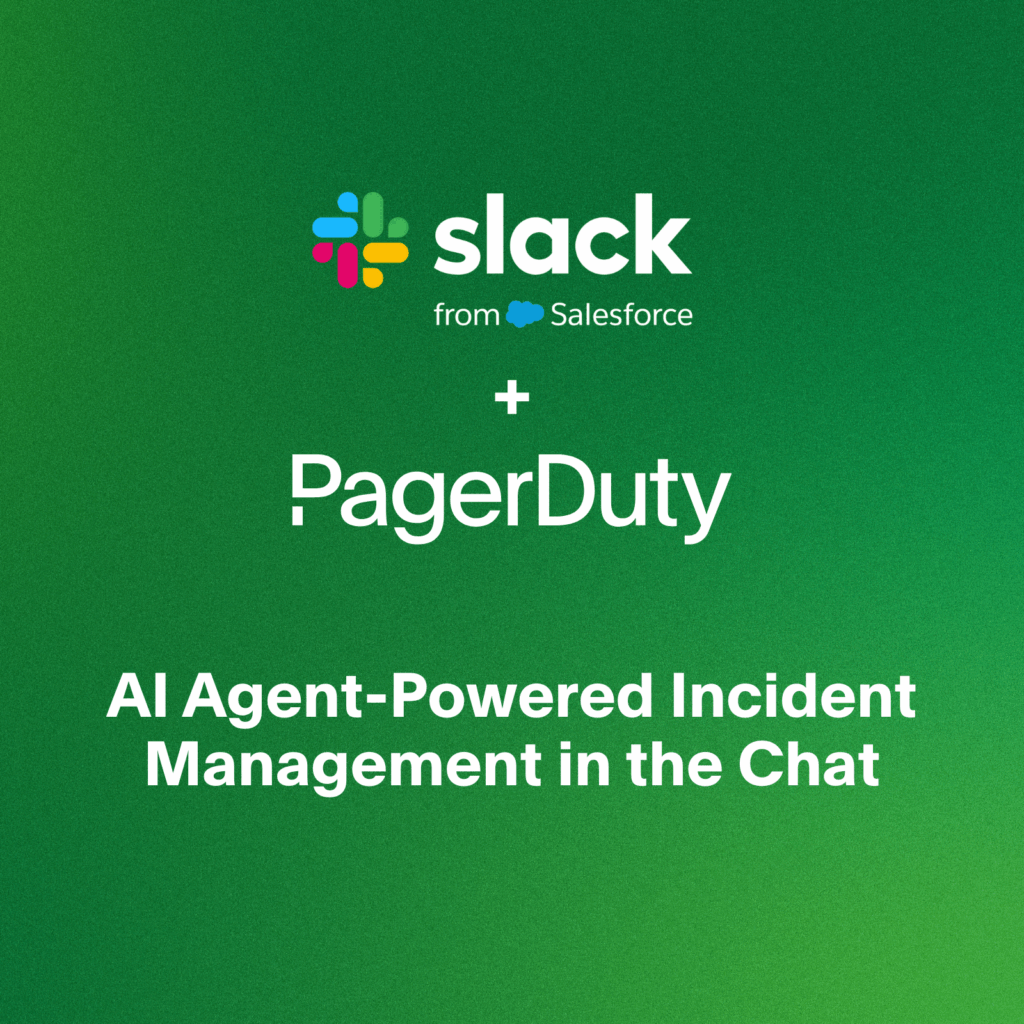- PagerDuty /
- Blog /
- Incident Management & Response /
- A Deep-Dive Into PagerDuty’s New Incident Workflows
Blog
A Deep-Dive Into PagerDuty’s New Incident Workflows
The more that automation can remove toil and take care of rote tasks in incident response, the faster teams can focus on problem identification and resolution. And the faster they can resolve an incident, the sooner they can get back to building new products and services.
One of the most highly anticipated announcements from our November launch was Incident Workflows to automate manual steps of incident response. Today, we are excited to share that this feature is now generally available. If you’re a PagerDuty customer, you can start using them today!

What are incident workflows?
Think about all of the manual steps in your incident response process–paging subject matter experts, setting up a conference bridge, establishing a Slack channel, sending out status updates… the list goes on. Remembering to take each of these steps every time an incident strikes adds unnecessary cognitive load to an already stressful process. These repeatable, manual tasks are perfect candidates for automation.
Incident Workflows automatically orchestrate the actions you already know you’ll need to take based on the type of incident at hand. Serving as an upgrade from Response Plays, now you can use a no-code/low-code builder to create customizable incident workflows that will reduce the manual work required to escalate, mobilize, and coordinate the right incident response for any use case. You can automatically trigger common incident response actions using if-this-then-that logic, such as adding a responder, subscribing stakeholders, or spinning up a conference bridge.
Here’s a short demo that showcases how it works:
Let’s take a closer look at the functionality that makes Incident Workflows so powerful.
Conditional Triggers
Different incident types require different remediation steps. Conditional triggers allow you to create logic to kick off a workflow when criteria for certain incident fields are met–like changes to priority, urgency, or status. For example, you can now define a major incident workflow that is automatically triggered for all P1 and P2 incidents. And for the users who would like to double down on automation, you could even set priority using Event Orchestration and have your Incident Workflow pick up that priority change as a trigger for the major incident workflow.

You can also utilize manual triggers that allow a responder to start a workflow directly from the incident details page. When a manual trigger is added, Incident Workflows can be triggered from the PagerDuty web app, mobile app, Slack, Microsoft Teams, or directly through the API.
Enhanced CollabOps Actions
Save time setting up collaboration channels by configuring your workflow to do it for you. Use workflow actions to spin up a Zoom conference bridge or create a per-incident Slack channel that includes all incident responders and incident updates. P.S. If you’re a Microsoft Teams user, we’re working on comparable functionality–stay tuned.

Easy Communications & Coordination
Communicating to internal and external stakeholders in a timely and transparent way is essential to effective incident response. As my colleague, Hannah Culver, explained, having a prepared business response plan in place can help internal cross-functional teams work better together, while also helping customer-facing teams preserve customer trust through proactive communications. Incident Workflows make this piece of the puzzle easier by allowing users to automate adding responders to the incident, subscribing stakeholders, and posting status updates, so you can keep everyone who needs to know about the incident informed in real time.
Resolve On-the-Go
Incident Workflows are also available for PagerDuty Mobile on iOS and Android devices. Whether walking your dog or away from your desk, PagerDuty Mobile alerts you about the top open incidents you need to take action on. You can manually trigger a preconfigured incident workflow of custom response steps, from your incident detail screen, and start working with the right teams to resolve the incident from your preferred mobile devices. Learn more about triggering Incident Workflows from your mobile device in the Knowledge Base.



End-to-End Automation on a Unified Platform
Incident Workflows were built to pair with other automation features on the PagerDuty platform to help teams resolve faster and minimize impact to revenue. For example, Event Orchestration can simultaneously change priority to automatically trigger an Incident Workflow, while also kicking off automated diagnostics via Automation Actions so that the script is already run by the time the right responders are called and get to the incident-specific Slack channel that the Incident Workflow has spun up.
Conclusion
During Incident Response, responders should be free to focus on their core responsibility – resolving the incident. Incident Workflows give them the gift of being able to automate those other essential, yet tedious tasks in a standardized, repeatable way. By standardizing your incident response processes, you can ensure the right actions are taken across teams to reduce your time to incident resolution. Given that Incident Workflows are already included in Business and Digital Operations plans, it makes sense to utilize this great new functionality at no additional cost. Why piece together your tech, when you can achieve end-to-end incident response all in one place? Your management team asking about tool consolidation will certainly appreciate it.
This is just the first step in PagerDuty’s journey towards offering more extensibility for our customers to configure responses for their unique use cases. To learn more about Incident Workflows, check out our KB article and try it out today. For more in-depth learning, you can also sign up for the Incident Workflows PDU course on-demand.


